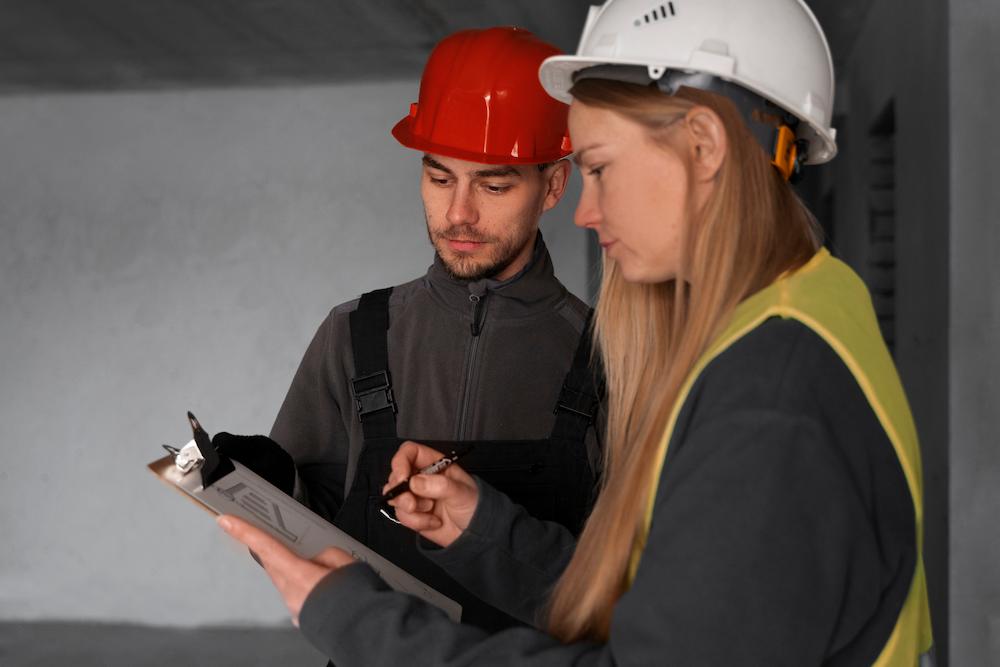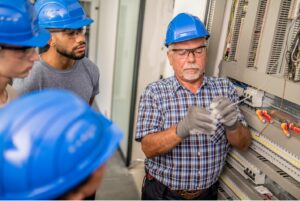With training costs at sky-high levels, companies simply can’t afford inefficient training programs that don’t properly equip their employees. Installation technician training is especially important, as businesses rely on technicians to turn successful training into positive customer experiences. Any company that doesn’t provide clear training built for the modern environment is risking high turnover and poor customer feedback.
But how do companies empower technicians without spending too much time on inefficient training? How do businesses use training to nurture skillsets while increasing productivity? For most businesses, the answer lies in the ability to develop dynamic training solutions that will help technicians continue to hone their skills long after primary training. Consider these guidelines for developing training programs that will help technicians throughout their various stages of employment.
The Value of Exceptional Installation Technician Training
About 68% of overall workers say they receive enough training. While this sounds like an effective starting point, it also paints a troubling picture for product installers. If one out of three installation technicians is undertrained, companies are exposed to a groundswell of customer discontent. Under the worst circumstances, products might be installed incorrectly, which leads to additional installation time, callbacks, and negative reviews.
On the flip side, well-trained installers can have a profound impact on customer satisfaction. Technicians who are confident and prepared are better at straightforward jobs as well as installs requiring more nuance. As newer product lines become available, well-trained techs are able to pivot much faster than those who aren’t using high-quality learning and development systems.
Companies that don’t provide adequate training are also setting themselves up for spikes in turnover and much higher operational costs. According to some estimates, subpar training can lead to 30-50% higher turnover, with about 40% of resignations related to inferior training. For manufacturers and distributors, this is an untenable dynamic that is especially challenging for companies trying to work through backlogs.
Increasing Technician Confidence While Reducing Training Time
The goal isn’t to provide more training—it’s to offer more efficient, thorough training that builds confidence without increasing training hours. While younger technicians expect to be supported by robust, digitally-based training, even seasoned professionals are seeing the upside of new training methodologies. Installers who learned through paper instructions are seeing first-hand how modern systems can effectively cut training time and assist with troubleshooting.
Helping Technicians Visualize the Installation
While many companies have seen the light when it comes to shifting from paper to digital technology, there is still an overreliance on old-fashioned videos for training purposes. Videos can be helpful in many circumstances, but they are limited, showing only recorded views and lacking the interactive elements of today’s top digital tools.
Even the best installation technician training videos lack basic search features, requiring rewatching parts and manually skipping areas of redundancy, slowing down both training and troubleshooting. Without the ability to search or shift perspective, training videos are ultimately ineffective.
Related: Attracting & Retaining a New Generation of Workers Through Digital-Forward Practices
Instead of video-based installation training, immersive 3D imaging can serve as a much more effective training assistant. Zooming and searching become simple with the leading 3D-based systems, seamlessly connecting technicians with all the precise information they require at that moment to get the job done. Next-generation visual tools also create easy reference points once installers are at the job site, improving product understanding, reinforcing skills, and decreasing learning curves.
Onboarding in Today’s Hypercompetitive Landscape
Employees widely support installation technician training programs across the business world. In fact, research shows that 74% of employees are interested in training after they punch out, showing the strong desire of employees to improve skill and confidence in their field. Installation technicians want to succeed and are often willing to put in a few extra hours to make sure they’re ready.
To meet the needs of these employees, companies must ensure they implement an onboarding process that develops skills and addresses any concerns employees might have—all while helping them go beyond initial training. While a one-size-fits-all, linear approach used to be standard for training, today’s technicians need more than dusty packets and a few videos.
With this in mind, it’s critical to use digital tools to create a dynamic learning environment for techs of all experience and skill levels. Team leaders must establish programs that allow customizable training that caters to both the group and individual. Many technicians who do not have confidence in the training program they participate in will look elsewhere for a job that offers a more structured, clear path to success, which is especially problematic in a historically tight labor market.
The Need for Portable Training for Today’s Technicians
In addition to effective onboarding, the work-from-anywhere mindset has completely taken over the workforce in the wake of the pandemic, and this affects modern training strategies. Paper manuals and basic training videos made sense in the older economy, but employees now live in a complex digital world that is always in flux. Today’s leading training technology eliminates the time and space limitations that have plagued installation technician training programs.
As companies fight the skills gap, training liaisons are now able to immediately deploy effective training materials to new and existing hires. Recently added technicians can then securely access these materials from their everyday devices, allowing them to quickly begin the skill-building process.
While many companies may still want employees to be physically present for initial training sessions, flexible training that can be completed—and later reviewed—from anywhere is now the gold standard.
Ongoing Training: Learning as Technicians Grow into the Position
One of the best things a company can do is help technicians continue to learn long after the initial training is completed. Your training should:
- Help techs learn at their own pace
- Allow access to training materials from anywhere
- Make it easy to review training materials just prior to a job
- Be accessible in areas with spotty Wi-Fi
The ability to encourage learning and provide appropriate support comes with several advantages. Technicians with the right foundation will be able to do basic jobs faster and become more adept at taking on new challenges.
While the direct impact on customers will be the most obvious benefit, strong support systems also lead to more motivated technicians. Teams see improved efficiency, technicians become more interested in growing in their position, and training practices become easier to refine over time.
Related: Innovating the Customer Setup Experience to Reduce Returns
Being able to train on the job is also expected from the next generation of technicians. One prominent survey showed that two out of three employees would like to train as they go, suggesting that companies need to rethink frontloaded training programs. Providing a strong base of training and allowing technicians to learn as they progress is a pathway to reducing initial training time and elevating performance.
Installation Updates Must Be Streamlined in Today’s Digital World
The digital revolution has impacted just about every business, but the influence has been especially pronounced for product and installation updates. Companies must constantly update old models, fix issues, and find better ways of satisfying customers. For many organizations, this still means printing out new installation manuals to replace the old for every update, which makes for a cumbersome and expensive process. Even those using digital-only PDFs find themselves navigating inefficient retooling processes.
Compare this to companies that have embraced the advanced digital shift for product updates and installation guidelines. Today’s technicians should be able to effortlessly access the latest updates and compare them to older product instructionals.
With the right platform, technicians have the ability to zoom and change visual perspective, equating to a much easier time grasping a new-product install and avoiding mistakes, whether they’re just learning or refreshing themselves on the job. Without sifting through binders of old manuals, technicians can use modern toolkits to bring them up to speed quickly from one product cycle to the next.
Systems that Allow for Effortless Upskilling and Retraining
To maximize installer retention and maintain a high-quality workforce amidst an always changing work landscape, an effective upskilling and retraining process is essential. Long-time employees typically don’t want lengthy training sessions that feel like review, but there are ways to get them on board. Some key elements to focus on include:
- Enhanced troubleshooting. Quickly resolving issues has always been a hallmark of highly skilled installers. Even reluctant technicians will come around to new training methods if it improves their ability to troubleshoot.
- More efficient updates. Product updates are a normal part of the business, yet many companies lack a cohesive process for performing them. When veteran installers can easily catch up with industry changes and updates, your training program is working effectively.
- Eased transition to remote training. The efficiency of remote training is a main selling point for long-term employees. Providing intuitive remote options helps hesitant installers embrace the advantages of training on the go.
- Improved installation times. Using advanced training systems to trim installation times helps build installer confidence and improve commitment to the company’s mission.
While many technicians can feel overwhelmed as their industry evolves, top training platforms can sharpen skills and improve an installation technician’s ability to adapt. This translates to more satisfied technicians, a better work culture, and a more efficient installation process across the board.
Get More Out of Your Installer Training Program
Companies need easy-to-master training programs that will get new hires up to speed quickly while offering support for the long haul. Though an outdated approach will make it difficult to retain talent, teams that utilize today’s best training technology can help installers flourish at every career benchmark.
The result of a high-quality platform is less training time and improved skill sets, which translates to satisfied customers and more loyal employees. The right immersive 3D training systems empower technicians at every turn, helping companies transition away from paper models without special equipment or long production times.
With BILT, installers can access highly detailed, searchable, 3D instructions from anywhere. They can use multi-sensory elements to understand every part of the process, improve overall training and upskilling, and facilitate troubleshooting at the job site. Contact our team for more on how BILT can reduce training time and help installation techs reach their potential.



